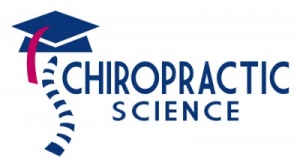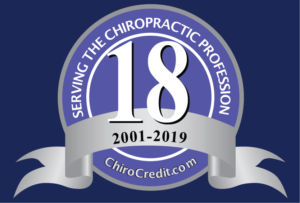In this upcoming episode, Dr. Meier will discuss how people move differently in the presence of (or in anticipation of) pain. Changes in motor control may play an important role in musculoskeletal pain. His lab uses a cross-disciplinary approach that combines neuroscience and movement biomechanics to provide new insights into the role of potential interactions between movement behavior, psychological factors and supraspinal mechanisms in the development and maintenance of persistent low back pain. We’ll touch also on fear avoidance and pain related movement avoidance. Dr. Michael L. Meier is a senior pain researcher and group leader at the Department of Chiropractic Medicine at the University of Zurich. He received his master’s degree in neuropsychology and his doctorate in cognitive neuroscience from the University of Zurich, focusing on the processing of pain and nociception in the brain. In 2019, he received a grant from the Swiss National Science Foundation (SNF) to study the role of movement behavior and cortical processes in the development and persistence of low back pain. A hallmark of his work is linking research from different disciplines such as biomechanics, neuroscience, and psychology, shedding light on novel interacting pathomechanisms underlying persistent low back pain whose pathoanatomical cause is often unclear.
Posts
Dr. Malaya is a research associate at Parker University in Dallas, Texas. He graduated from Parker in 2018 with a Doctorate in Chiropractic and is currently pursuing a PhD in Motor Control from the University of Houston. His current research interests are in sensorimotor integration, postural control and adaptation, as well as the neural mechanisms of manual manipulation. His overall goal is to help expand the foundational mechanisms and practical applications of manual joint manipulation as it relates to movement and neural rehabilitation.
Dr. Haworth’s research focuses on the mechanisms responsible for the integration of sensorimotor information in the production of human behavior. He uses eye-tracking combined with motion capture and posturographic measures to identify motor strategies used during daily tasks like upright standing, walking, and interpersonal communication. Extensions of this work include the identification of early indicators of clinical disorders and the production of novel therapeutic modalities. He has many active collaborations with colleagues in fields including chiropractic science and pediatric rehabilitation technology. He is focused to better understand the development of motor and social-cognitive skills in children with, and without, autism.
Please comment below if you have any questions for us during the interview. I might choose some of them for our conversation.
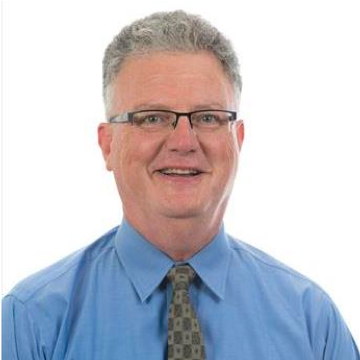
Dr. Haussler graduated from The Ohio State University, College of Veterinary Medicine in 1988 and completed a small animal internship in Sacramento, CA. To further his training in the conservative management of spinal-related disorders, he pursued human training at Palmer College of Chiropractic-West and completed a veterinary chiropractic certification program in 1993. He attended the University of California-Davis to attain a PhD focusing on spinal pathology and pelvic biomechanics in Thoroughbred racehorses. Currently, he is an Associate Professor at the Orthopaedic Research Center at Colorado State University and is involved in teaching, clinical duties, and research into the objective assessment of musculoskeletal pain, spinal dysfunction and the application of physical therapy and rehabilitation. Please comment below if you have any questions for us during the interview. I might choose some of them for our conversation.

I am excited for the opportunity to discuss chiropractic research with Drs. Peterson and Humphreys in the near future. Cynthia Peterson, RN, DC, DACBR, M.Med.Ed. has worked as a chiropractic radiologist, researcher and educator in 4 countries. She retired from her positions as Professor and researcher, Radiology Department, Orthopaedic University hospital Balgrist and Professor, Chiropractic Medicine Programme, University of Zürich in 2017. She is currently a Visiting Professor for the Chiropractic Department in the Faculty of Health at the University of Johannesburg, South Africa and is the Quality Assurance Consultant for the European Council on Chiropractic Education. Barry Kim Humphreys, BSc, DC, PhD, is Professor Emeritus, Faculty of Medicine, University of Zurich. He retired in July 2017, after 9 years as the first Professor for Chiropractic Medicine in Switzerland. During this time, Professor Humphreys was responsible for the development and accreditations of the chiropractic education program, research portfolio and teaching clinic within the university, medical faculty and teaching hospital. He has been active in research including chiropractic clinical outcome studies for back and neck pain, functional MRI studies of chronic pain patients and back pain in various gravitational environments (parabolic flight). Please comment below if you have any questions for us during the interview. I might choose some of them for our conversation.
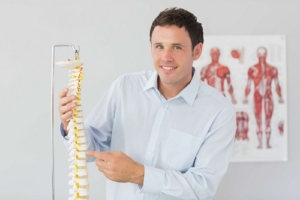 Chiropractic care can be complicated for patients because of its specialized terminology for assessment, treatment plans, symptom trajectories, and potential for benign adverse events. One solution is for chiropractors to adopt functional health literacy, interactive health literacy, and critical health literacy into patient-centered chiropractic care. Health literacy empowers patients of all backgrounds to “read” and “listen” to their bodies, verbally communicate their thoughts and needs during the chiropractic visit, and access print and digital technologies to optimize their health outcomes. See here for our recent poster describing health literacy within the chiropractic profession (https://chiropracticscience.com/advancing-a-framework-for-chiropractic-health-literacy/).
Chiropractic care can be complicated for patients because of its specialized terminology for assessment, treatment plans, symptom trajectories, and potential for benign adverse events. One solution is for chiropractors to adopt functional health literacy, interactive health literacy, and critical health literacy into patient-centered chiropractic care. Health literacy empowers patients of all backgrounds to “read” and “listen” to their bodies, verbally communicate their thoughts and needs during the chiropractic visit, and access print and digital technologies to optimize their health outcomes. See here for our recent poster describing health literacy within the chiropractic profession (https://chiropracticscience.com/advancing-a-framework-for-chiropractic-health-literacy/).
Based upon several U.S. and international consensus studies (2017), we advocate for chiropractors and D.C. students to use, implement, and practice health literacy competencies developed by Coleman et al. (2013 & 2017). We propose the adoption of a Health Literacy Curriculum (HLC) for chiropractors, because other health and medical professionals are adopting these competencies also.
The top consensus recommendation by the Coleman et al study (2017) was to use a “teach back” or “show me” technique with patients to check for understanding and correct misunderstandings, during the clinical visit and and during the informed consent process. In this regard, patients are asked to demonstrate their level of understanding by repeating back in their own words the information the professional has communicated to them. To learn more about the other health literacy recommendations, please look at our poster or visit the link below to the Coleman study.
References:
Coleman, C., Hudson, S., & Pederson, B. (2017). Prioritized health literacy and clear communication practices for health care professionals. HLRP: Health Literacy Research and Practice, 1(3): e91-e99 https://doi.org/10.3928/24748307-20170503-01
Coleman, C. A., Hudson, S., & Maine, L.L. (2013). Health literacy practices and educational competencies for health professionals: a consensus study.Journal of Health communication,18 Suppl 1(Suppl 1), 82-102.
 Upcoming interview with Dr. Katie de Luca. Katie de Luca is a post-doctoral research fellow in the Department of Chiropractic at Macquarie University. She is a chiropractor in clinical practice, however her research focuses on the epidemiology and management of musculoskeletal conditions, with expertise in the elderly. In 2016 she was awarded her PhD from the University of Newcastle, School of Medicine and Public Health. Her thesis explored the experience of pain in women with arthritis, and resulted in substantial contributions to fields of rheumatology, pain and ageing research. She has 25 peer-reviewed journal publications and more than 50 conference presentations, which includes several invited keynote presentations on back pain in the elderly. These have been at regional, national and international conferences in gerontology, pain, public health and chiropractic forums. She is on the editorial boards of Chiropractic and Manual Therapies and JMPT, and peer-reviews for another 13 journals. Please comment below if you have any questions for us during the interview. I might choose some of them for our conversation.
Upcoming interview with Dr. Katie de Luca. Katie de Luca is a post-doctoral research fellow in the Department of Chiropractic at Macquarie University. She is a chiropractor in clinical practice, however her research focuses on the epidemiology and management of musculoskeletal conditions, with expertise in the elderly. In 2016 she was awarded her PhD from the University of Newcastle, School of Medicine and Public Health. Her thesis explored the experience of pain in women with arthritis, and resulted in substantial contributions to fields of rheumatology, pain and ageing research. She has 25 peer-reviewed journal publications and more than 50 conference presentations, which includes several invited keynote presentations on back pain in the elderly. These have been at regional, national and international conferences in gerontology, pain, public health and chiropractic forums. She is on the editorial boards of Chiropractic and Manual Therapies and JMPT, and peer-reviews for another 13 journals. Please comment below if you have any questions for us during the interview. I might choose some of them for our conversation.
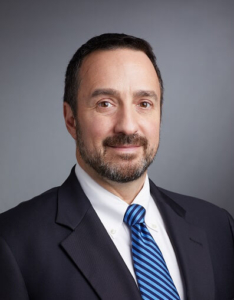 Upcoming interview with Dr. Anthony Lisi. We will be discussing chiropractic research and the state of chiropractic in the VA. Dr. Lisi is the Chiropractic Program Director for the US Veterans Health Administration, overseeing all national programmatic issues related to the integration of chiropractic clinical services, education and research. He is also an Associate Research Scientist at the Yale Center for Medical Informatics, Yale University School of Medicine. He has authored numerous peer-reviewed publications on topics including low back pain management, spinal manipulation, interprofessional education, and chiropractic services. Dr. Lisi received the American Chiropractic Associations’ 2015 Academician of the Year award, and the 2017 Chiropractor of the Year award. Please comment below if you have any questions for us during the interview. I might choose some of them for our conversation.
Upcoming interview with Dr. Anthony Lisi. We will be discussing chiropractic research and the state of chiropractic in the VA. Dr. Lisi is the Chiropractic Program Director for the US Veterans Health Administration, overseeing all national programmatic issues related to the integration of chiropractic clinical services, education and research. He is also an Associate Research Scientist at the Yale Center for Medical Informatics, Yale University School of Medicine. He has authored numerous peer-reviewed publications on topics including low back pain management, spinal manipulation, interprofessional education, and chiropractic services. Dr. Lisi received the American Chiropractic Associations’ 2015 Academician of the Year award, and the 2017 Chiropractor of the Year award. Please comment below if you have any questions for us during the interview. I might choose some of them for our conversation.
 Podcasts are increasingly being used for health professionals’ education. They are utilized by individual practitioners, teaching institutions, and many major journals are adding podcasts to their offerings. To date, there are no evidence-based guidelines for the development of educational podcasts.
Podcasts are increasingly being used for health professionals’ education. They are utilized by individual practitioners, teaching institutions, and many major journals are adding podcasts to their offerings. To date, there are no evidence-based guidelines for the development of educational podcasts.
Below are some snippets regarding the evidence base for podcasts from the recent literature.
“This study suggests that podcasts and blog posts are useful for extracurricular knowledge acquisition by undergraduate medical students with no significant difference between the two modalities. The usage conditions for each type of media differ.” https://www.ncbi.nlm.nih.gov/pubmed/29552428
“Participants who completed the assessments demonstrated an effect of learning. The top three activities participants were engaged in while listening to the podcasts were driving (46%), completing chores (26%), and exercising (23%).”
https://www.ncbi.nlm.nih.gov/pubmed/29464137
How about speeding up the playback on the podcast to 1.5x? Does it make a difference? “These findings suggest that, unlike previously published studies that showed subjective improvement in performance with sped-up video-recorded lectures compared to normal speed, objective performance may be worse.”
https://www.ncbi.nlm.nih.gov/pubmed/29383063
“Podcasts are an effective method for medical residents to learn from pharmacy students and may also improve pharmacy students’ confidence in their abilities.”
https://www.ncbi.nlm.nih.gov/pubmed/29233443
“There is limited evidence showing the efficacy of podcasts as teaching tools, or regarding best practices in making podcasts. More rigorous studies evaluating efficacy, changes in behavior, and changes in patient outcomes need to be performed in order to prove podcasts‘ value and to justify production costs.”
https://www.ncbi.nlm.nih.gov/pubmed/29207454
In this upcoming interview, John M. Mayer, DC, PhD, CCRP, FACSM will discuss his extensive clinical and research experience in occupational health, wellness, and therapeutic exercise. Dr. Mayer has led teams on numerous clinical trials across the country on various aspects of wellness, clinical management, and prevention funded through federal, state, industry, and foundation sources, including the largest single financial commitment by the US Department of Homeland Security on low back injury prevention in firefighters. Please comment below if you have any questions for us during the interview. I might choose some of them for our conversation.
 There is a growing trend of chiropractic use in adults. In a recent survey of US adults who used chiropractic services, back pain (63.0%) and neck pain (30.2%) were the most prevalent health problems for chiropractic consultations and the majority of users reported chiropractic helping a great deal with their health problem and improving overall health or well-being. Most of the survey respondents reported consulting a chiropractor for general wellness or disease prevention (43.3%), to improve their energy (16.3%), or to improve athletic or sports performance (15.4%). Many reported positive outcomes of chiropractic utilization agreeing that such care had helped them to improve overall health and make them feel better (66.9%), to sleep better (41.9%), and to reduce stress or to relax (40.2%). Almost half of all adults surveyed (47.9%) felt that chiropractic was very important for maintaining health and well-being, and another 30% felt it was somewhat important.
There is a growing trend of chiropractic use in adults. In a recent survey of US adults who used chiropractic services, back pain (63.0%) and neck pain (30.2%) were the most prevalent health problems for chiropractic consultations and the majority of users reported chiropractic helping a great deal with their health problem and improving overall health or well-being. Most of the survey respondents reported consulting a chiropractor for general wellness or disease prevention (43.3%), to improve their energy (16.3%), or to improve athletic or sports performance (15.4%). Many reported positive outcomes of chiropractic utilization agreeing that such care had helped them to improve overall health and make them feel better (66.9%), to sleep better (41.9%), and to reduce stress or to relax (40.2%). Almost half of all adults surveyed (47.9%) felt that chiropractic was very important for maintaining health and well-being, and another 30% felt it was somewhat important.
Reference: Adams J, Peng W, Cramer H, Sundberg T, Moore C, Amorin-Woods L, Sibbritt D, Lauche R. The Prevalence, Patterns, and Predictors of Chiropractic Use Among US Adults: Results From the 2012 National Health Interview Survey. Spine (Phila Pa 1976). 2017 Dec 1;42(23):1810-1816.
Episode
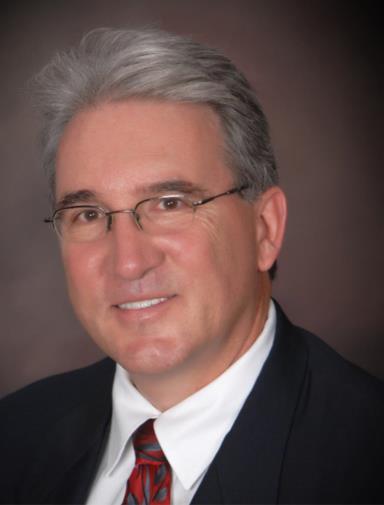
In this episode, Dr. Ronald Farabaugh and I discuss his recent systematic review regarding the cost of chiropractic vs. medical management of adults with spine-related musculoskeletal pain. Dr. Farabaugh has been in practice in Ohio since 1982. He was appointed by the Governor in 1994 to serve on the Healthcare Quality Advisory Council to help design managed care programs for the Bureau of Workers’ Compensation (BWC), specifically Qualified Health Plans (QHP). He became the 1996-President of the Ohio State Chiropractic Association. He is the former Chairman of the CCGPP (Council on Chiropractic Guidelines and Practice Parameters). He was past president of the Ohio Chiropractic State Board, appointed by Governor Strickland in 2010. He is on the ODG-Board of Advisors (Official Disability Guidelines). He currently serves as VP and National Physical Medicine Director for Advanced Medicine Integration Group, LP (AMI).
Dr. Farabaugh was appointed to serve on the Scientific Commission of The Clinical Compass and he has published 15 papers on clinical practice guidelines in peer reviewed journals including the paper that we will discuss today on cost-effectiveness that just came out in March of 2024.
Please visit Dr. Farabaugh’s research page at researchgate.net.
Here is the reference and link to the article we discuss in this episode.
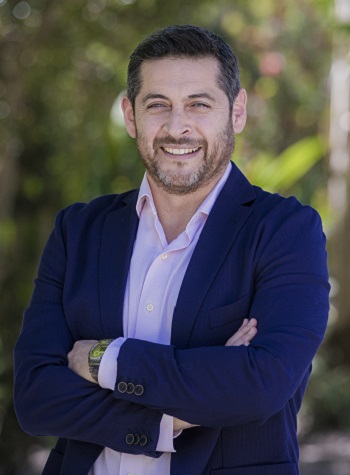
Dr. Matt Fernandez is a registered chiropractor in Australia and is currently a senior lecturer at Central Queensland University (CQU), where he teaches and supervises students in the Master of Chiropractic program. Prior to his CQU appointment, he was a lecturer at the Department of Chiropractic, Macquarie University. Matt is very passionate about research and following the completion of his PhD at the University of Sydney, he now leads various research projects and supervises research students. He also regularly presents his research at conferences in targeted areas that advances the knowledge and understanding of chiropractic through physical activity, exercise and patient education interventions. Matt is also a member of the inaugural CARL fellows.
In this episode, we discuss physical activity, exercise, practice guidelines, and the chiropractic profession.
Please find Dr. Fernandez’s researchgate.net profile here.
Here are the articles we discuss in this episode.
| 1. | Physical activity promotion in chiropractic: a systematic review of clinician-based surveys.Fernandez M, Young A, Milton K, Pinhiero M, de Luca K, Ferreira P, Hebert J.Chiropr Man Therap. 2022 Dec 13;30(1):55. doi: 10.1186/s12998-022-00467-9.PMID: 36514061 Free PMC article. Review. |
| 2. | GLA:D® Back Australia: a mixed methods feasibility study for implementation.Fernandez M, Young A, Kongsted A, Hartvigsen J, Barton C, Wallis J, Kent P, Kawchuk G, Jenkins H, Hancock M, French SD.Chiropr Man Therap. 2022 Apr 7;30(1):17. doi: 10.1186/s12998-022-00427-3.PMID: 35392935 Free PMC article. |
| 3. | The prevalence and determinants of physical activity promotion by Australian chiropractors: A cross sectional study.Fernandez M, Moore C, Eklund A, Swain M, de Luca K, Sibbritt D, Adams J, Peng W.Complement Ther Med. 2019 Aug;45:172-178. doi: 10.1016/j.ctim.2019.06.012. Epub 2019 Jun 18.PMID: 31331556 |
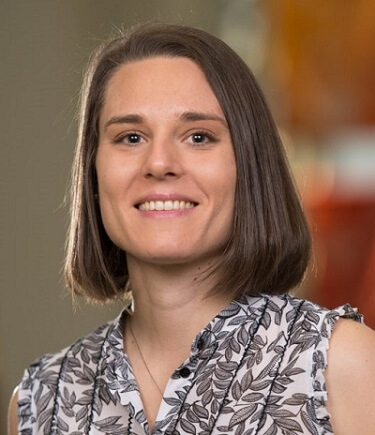
Dr. Lindsay Gorrell and I discuss her research regarding spinal manipulation, the vertebral artery and reporting of adverse events. Lindsay Gorrell completed her clinical training in Chiropractic and a Master of Research (The effect of manual and instrument applied cervical spine manipulation on mechanical neck pain) at Macquarie University, Australia. She then completed a PhD (Musculoskeletal Biomechanical and Electromyographical Responses Associated with Spinal Manipulation) under the supervision of Drs Walter Herzog and Jay Triano at The University of Calgary, Canada. She is now working as an International Research Fellow at the Balgrist University Hospital, University of Zurich, Switzerland. Lindsay is also studying a Master of Science in Medical Education at The University of Oxford, England.
Lindsay’s research interests are centered on investigating: i) the delivery of spinal manipulation; ii) the physiological responses and clinical outcomes occurring in response to spinal manipulation; and iii) the safety of the manual therapy. This requires different experimental approaches depending on the research question of interest. Most recently, she has published on the relationship between the amount of strain experienced by the vertebral artery, the 3D movements of the head and neck and the forces applied by clinicians during cervical spine manipulation and physiological responses to cervical and upper thoracic spinal manipulation. Lindsay has maintained part-time clinical practice since graduation.
View Dr. Gorrell’s researchgate page here.
Below are the research studies that we discuss in this episode.
| 1. | The reporting of adverse events following spinal manipulation in randomized clinical trials-a systematic review.Gorrell LM, Engel RM, Brown B, Lystad RP.Spine J. 2016 Sep;16(9):1143-51. doi: 10.1016/j.spinee.2016.05.018. Epub 2016 May 27.PMID: 27241208 Review. |
| 2. | Differences in force-time parameters and electromyographic characteristics of two high-velocity, low-amplitude spinal manipulations following one another in quick succession.Gorrell LM, Conway PJ, Herzog W.Chiropr Man Therap. 2020 Dec 8;28(1):67. doi: 10.1186/s12998-020-00355-0.PMID: 33287851 Free PMC article. |
| 3. | Kinematics of the head and associated vertebral artery length changes during high-velocity, low-amplitude cervical spine manipulation.Gorrell LM, Kuntze G, Ronsky JL, Carter R, Symons B, Triano JJ, Herzog W.Chiropr Man Therap. 2022 Jun 1;30(1):28. doi: 10.1186/s12998-022-00438-0.PMID: 35650649 Free PMC article. |
| 4. | Vertebral arteries do not experience tensile force during manual cervical spine manipulation applied to human cadavers.Gorrell LM, Sawatsky A, Edwards WB, Herzog W.J Man Manip Ther. 2022 Nov 15:1-9. doi: 10.1080/10669817.2022.2148048. Online ahead of print.PMID: 36382347 |
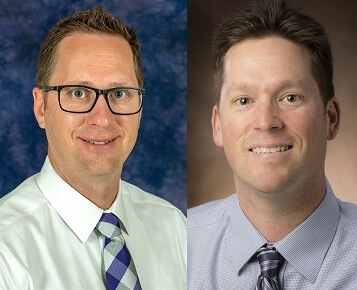
Dr. Brian Anderson and I discuss the article, Where to start? A two stage residual inclusion approach to estimating influence of the initial provider on health care utilization and costs for low back pain in the US (2022). We question the relationship between chiropractic and emergency department – ED visits in this paper. Does it makes sense that those who first saw a chiropractor had the lowest out of pocket and overall costs of care, the least hospitalizations and serious illnesses out of any provider type and yet had the highest emergency department – ED visits? Furthermore, those who first saw a chiropractor ranked second lowest of all providers for early opioid prescription, long opioid prescription, MRI/CT imaging, and surgery.
If you have not listened to Dr. Anderson’s podcast episode on chiropractic, treatment escalation, and medical services, please visit here.
Visit Dr. Anderson’s researchgate.net profile and Dr. Smith’s researchgate.net profile.
Below are the articles that are mentioned in this episode of the chiropractic science podcast.
| 1. | Where to start? A two stage residual inclusion approach to estimating influence of the initial provider on health care utilization and costs for low back pain in the US.Harwood KJ, Pines JM, Andrilla CHA, Frogner BK.BMC Health Serv Res. 2022 May 23;22(1):694. doi: 10.1186/s12913-022-08092-1.PMID: 35606781 Free PMC article. |
| 2. | Influence of Initial Health Care Provider on Subsequent Health Care Utilization for Patients With a New Onset of Low Back Pain: A Scoping Review.Zouch J, Comachio J, Bussières A, Ashton-James CE, Reis AHS, Chen Y, Ferreira P.Phys Ther. 2022 Nov 1:pzac150. doi: 10.1093/ptj/pzac150. Online ahead of print.PMID: 36317766 |
| 3. | Associations Between Early Chiropractic Care and Physical Therapy on Subsequent Opioid Use Among Persons With Low Back Pain in Arkansas.Acharya M, Chopra D, Smith AM, Fritz JM, Martin BC.J Chiropr Med. 2022 Jun;21(2):67-76. doi: 10.1016/j.jcm.2022.02.007. Epub 2022 May 21.PMID: 35774633 Free PMC article. |
| 4. | Initial Choice of Spinal Manipulation Reduces Escalation of Care for Chronic Low Back Pain Among Older Medicare Beneficiaries.Whedon JM, Kizhakkeveettil A, Toler AW, Bezdjian S, Rossi D, Uptmor S, MacKenzie TA, Lurie JD, Hurwitz EL, Coulter I, Haldeman S.Spine (Phila Pa 1976). 2022 Feb 15;47(4):E142-E148. doi: 10.1097/BRS.0000000000004118.PMID: 34474443 |
| 5. | Initial presentation for acute low back pain: is early physical therapy associated with healthcare utilization and spending? A retrospective review of a National Database.Marrache M, Prasad N, Margalit A, Nayar SK, Best MJ, Fritz JM, Skolasky RL.BMC Health Serv Res. 2022 Jul 2;22(1):851. doi: 10.1186/s12913-022-08255-0.PMID: 35778738 Free PMC article. |
| 6. | Risk of Treatment Escalation in Recipients vs Nonrecipients of Spinal Manipulation for Musculoskeletal Cervical Spine Disorders: An Analysis of Insurance Claims.Anderson BR, McClellan WS, Long CR.J Manipulative Physiol Ther. 2021 Jun;44(5):372-377. doi: 10.1016/j.jmpt.2021.03.001. Epub 2021 Aug 6.PMID: 34366149 |
| 7. | Prescription history of emergency department patients prescribed opioids.Hoppe JA, Houghland J, Yaron M, Heard K.West J Emerg Med. 2013 May;14(3):247-52. doi: 10.5811/westjem.2012.2.6915.PMID: 23687544 Free PMC article. |
| 8. | Interpreting the National Hospital Ambulatory Medical Care Survey: United States Emergency Department Opioid Prescribing, 2006-2010.Kea B, Fu R, Lowe RA, Sun BC.Acad Emerg Med. 2016 Feb;23(2):159-65. doi: 10.1111/acem.12862. Epub 2016 Jan 23.PMID: 26802501 Free PMC article. |
| 9. | Management of patients with low back pain in the emergency department: Is it feasible to follow evidence-based recommendations?Urrutia J, Besa P, Meissner-Haecker A, Gonzalez R, Gonzalez J.Emerg Med Australas. 2020 Dec;32(6):1001-1007. doi: 10.1111/1742-6723.13544. Epub 2020 Jun 18.PMID: 32558273 |
| 10. | Imaging during low back pain ED visits: a claims-based descriptive analysis.Schlemmer E, Mitchiner JC, Brown M, Wasilevich E.Am J Emerg Med. 2015 Mar;33(3):414-8. doi: 10.1016/j.ajem.2014.12.060. Epub 2014 Dec 31.PMID: 25624075 |
| 11. | Diagnostic testing and treatment of low back pain in United States emergency departments: a national perspective.Friedman BW, Chilstrom M, Bijur PE, Gallagher EJ.Spine (Phila Pa 1976). 2010 Nov 15;35(24):E1406-11. doi: 10.1097/BRS.0b013e3181d952a5.PMID: 21030902 Free PMC article. |
| 12. | Review article: Best practice management of low back pain in the emergency department (part 1 of the musculoskeletal injuries rapid review series).Strudwick K, McPhee M, Bell A, Martin-Khan M, Russell T.Emerg Med Australas. 2018 Feb;30(1):18-35. doi: 10.1111/1742-6723.12907. Epub 2017 Dec 12.PMID: 29232762 Review. |
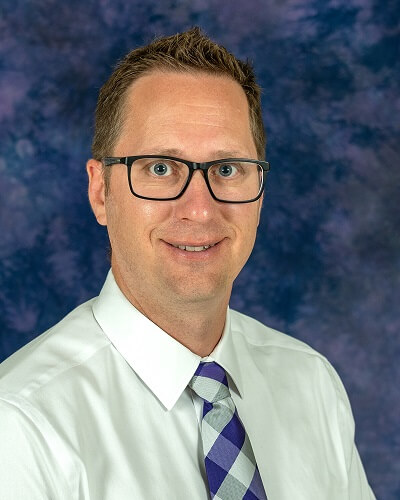
Dr. Brian Anderson DC, MPH, MS, PhD is an Assistant Professor within the Palmer Center for Chiropractic Research (PCCR) at the Palmer College of Chiropractic, where his research is focused on evaluation of nonpharmacological spine care delivery in the US. His background includes 15 years of clinical experience as a licensed chiropractic physician in a variety of settings, including private practice, a hospital-based integrative medicine center, and a chiropractic academic teaching clinic. He has also been an educator for the past 15 years, teaching courses at the undergraduate, graduate, and post-graduate level. With a passion to better understand and contribute to conservative spine care research, he enrolled in a PhD program in Health Sciences in 2015 with a focus on Health Services Research. His dissertation was titled “A Secondary Analysis Of Insurance Claims Data To Determine The Association Between Provider Type And Treatment Escalation In Musculoskeletal Disorders”, which is a topic he continues to investigate currently. In this interview, we discuss his journey from chiropractor to researcher, and several of his publications.
After graduating with his PhD in 2019, he joined the faculty at the Palmer Center for Chiropractic Research, where he participated in a pilot clinical study as a treating clinician, developed relationships with several research collaborators, and made progress towards developing his own research program.
Dr. Anderson’s research has been presented at many academic conferences, for which he has received several best paper awards. He is currently a co-investigator and primary analyst on a R15 grant titled “Spinal Manipulative Therapy vs Prescription Drug Therapy for Care of Aged Medicare Beneficiaries with Neck Pain”. He was recently awarded a 2-year Loan Repayment Award through the National Center for Complementary & Integrative Health (NCCIH), and also participated in the Fall 2022 cohort of the US Bone & Joint Young Investigators Initiative.
View Dr. Anderson’s publications at researchgate.net.
Here are the articles we discuss in this episode:
| 1. | Risk of Treatment Escalation in Recipients vs Nonrecipients of Spinal Manipulation for Musculoskeletal Cervical Spine Disorders: An Analysis of Insurance Claims.Anderson BR, McClellan WS, Long CR.J Manipulative Physiol Ther. 2021 Jun;44(5):372-377. doi: 10.1016/j.jmpt.2021.03.001. Epub 2021 Aug 6.PMID: 34366149 |
| 2. | The Effect of Reduced Access to Chiropractic Care on Medical Service Use for Spine Conditions Among Older Adults.Davis M, Yakusheva O, Liu H, Anderson B, Bynum J.J Manipulative Physiol Ther. 2021 Jun;44(5):353-362. doi: 10.1016/j.jmpt.2021.05.002. Epub 2021 Aug 8.PMID: 34376317 Free PMC article. |
| 3. | The Relationship Between Healthcare Provider Availability and Conservative Versus Non-conservative Treatment for Back Pain Among Older Americans.Anderson BR, Yakusheva O, Liu H, Bynum JPW, Davis MA.J Gen Intern Med. 2022 Mar;37(4):992-994. doi: 10.1007/s11606-021-06889-0. Epub 2021 May 24.PMID: 34031853 No abstract available. |
| 4. | Three Patterns of Spinal Manipulative Therapy for Back Pain and Their Association With Imaging Studies, Injection Procedures, and Surgery: A Cohort Study of Insurance Claims.Anderson BR, McClellan SW.J Manipulative Physiol Ther. 2021 Nov-Dec;44(9):683-689. doi: 10.1016/j.jmpt.2022.03.010. Epub 2022 Jun 24.PMID: 35753873 |

In this interview, Dr. Scali discusses with me the upper cervical spine and myodural bridge (connective tissue between suboccipital muscles and the cervical spinal dura mater). Dr. Frank Scali grew up in Valley Stream, Long Island, New York, and studied Neuroscience at Stony Brook University. In 2009, he received his Doctorate in Chiropractic at Logan University in Chesterfield, Missouri. During his time in medical school, Dr. Frank Scali professionally prosected cadaveric specimens for Gray’s Anatomy and illustrated for multiple journals and textbooks, including the Oxford Handbook of Bariatric Surgery. While attending medical school, he published multiple non-variant anatomical findings in the medical literature and served as an Ad Hoc Reviewer in Journals such as The Spine Journal, The Anatomical Record, Surgical and Radiological Anatomy, and others. In 2018, he graduated with his MD from AUC School of Medicine with fifty-four publications, including textbook contributions and a patent for a medical device.
Dr. Scali is board certified in Chiropractic and Medicine. His current title is Assistant Professor of Medical Education and Anatomy at the California University of Science and Medicine. At CUSM, Dr. Scali serves as the Director of the ATLAS Lab Center, is the Director of the USMLE Board Preparation, and is the Course Director for MSK/Derm, Surgical Anatomy, and the Step 1/2CK Board Prep course. He was inducted into the Sigma Xi Scientific Research & Honor Society in 2020 and serves on the Editorial Board for the Journal of Medicine since 2019. As Assistant Professor of Medical Education, Dr. Scali has achieved dozens of teaching awards in Medical Foundations, MSK/Derm, Neuroscience, Reproductive Medicine, and Medical Board Preparation courses. Because of his innovative teaching style, in 2021, Dr. Scali became the inaugural recipient of the Robert Suskind & Leslie Lewinter-Suskind Pre-Clinical Faculty of the Year award.
Visit Dr. Scali’s research at researchgate.net and view his faculty page.
Here are the articles we discuss during this episode:
| 1. | Anatomical connection between the rectus capitis posterior major and the dura mater.Scali F, Marsili ES, Pontell ME.Spine (Phila Pa 1976). 2011 Dec 1;36(25):E1612-4. doi: 10.1097/BRS.0b013e31821129df.PMID: 21278628 |
| 2. | Investigation of meningomyovertebral structures within the upper cervical epidural space: a sheet plastination study with clinical implications.Scali F, Pontell ME, Nash LG, Enix DE.Spine J. 2015 Nov 1;15(11):2417-24. doi: 10.1016/j.spinee.2015.07.438. Epub 2015 Jul 22.PMID: 26210227 |
| 3. | Histological analysis of the rectus capitis posterior major’s myodural bridge.Scali F, Pontell ME, Enix DE, Marshall E.Spine J. 2013 May;13(5):558-63. doi: 10.1016/j.spinee.2013.01.015. Epub 2013 Feb 11.PMID: 23406969 |
| 4. | The Posterior Atlantooccipital Membrane: The Anchor for the Myodural Bridge and Meningovertebral Structures.Scali F, Ohno A, Enix D, Hassan S.Cureus. 2022 May 30;14(5):e25484. doi: 10.7759/cureus.25484. eCollection 2022 May.PMID: 35686279 Free PMC article. |

Dr. Carlos Gevers joins me to discuss mechanisms of spinal manipulation, particularly as they relate to central sensitization and neuroinflammation. He also shares a study on Tumor Necrosis Factor-Alpha in Urine Samples of Patients With Chronic Low Back Pain Undergoing Chiropractic Care.
Carlos Gevers Montoro is a second-generation chiropractor. He graduated from Life Chiropractic College West in 2003 as Valedictorian and the recipient of the Clinical Excellence Citation award. After practicing for a few years in Spain and France, he was instrumental in the opening of the Madrid College of Chiropractic (MCC), where he still lectures. His contributions at the MCC were mostly related to the clinical sciences. In parallel, he served for seven years as the President of the Spanish Chiropractic Association, being involved in chiropractic politics and policy at the national and international level.
In 2018 he decided to switch gears and take a completely new path in the research arena. He started his PhD in Pain Neurosciences at UQTR – University of Montreal joint program under the supervision of Prof. Mathieu Piché. His PhD studies are partially funded, by a prestigious grant from the Government of Quebec. His line of research and his first publications are mostly focused on mechanisms of spinal manipulation, particularly as they relate to central sensitization and neuroinflammation. These two phenomena seem to be strongly implicated in the development of chronic pain syndrome and other conditions.
Check out Dr. Carlos Gevers researchgate profile page.
Here are the articles we discuss in this episode:
| 1. | Presence of Tumor Necrosis Factor-Alpha in Urine Samples of Patients With Chronic Low Back Pain Undergoing Chiropractic Care: Preliminary Findings From a Prospective Cohort Study.Gevers-Montoro C, Romero-Santiago M, Losapio L, Conesa-Buendía FM, Newell D, Álvarez-Galovich L, Piché M, Ortega-De Mues A.Front Integr Neurosci. 2022 Apr 12;16:879083. doi: 10.3389/fnint.2022.879083. eCollection 2022.PMID: 35492573 Free PMC article. |
| 2. | Chiropractic Spinal Manipulation Prevents Secondary Hyperalgesia Induced by Topical Capsaicin in Healthy Individuals.Gevers-Montoro C, Provencher B, Northon S, Stedile-Lovatel JP, Ortega de Mues A, Piché M.Front Pain Res (Lausanne). 2021 Jul 20;2:702429. doi: 10.3389/fpain.2021.702429. eCollection 2021.PMID: 35295504 Free PMC article. |
| 3. | Neurophysiological mechanisms of chiropractic spinal manipulation for spine pain.Gevers-Montoro C, Provencher B, Descarreaux M, Ortega de Mues A, Piché M.Eur J Pain. 2021 Aug;25(7):1429-1448. doi: 10.1002/ejp.1773. Epub 2021 Apr 15.PMID: 33786932 Review. |
In this episode, Dr. Meier discusses how people move differently in the presence of (or in anticipation of) pain. Changes in motor control may play an important role in musculoskeletal pain. His lab uses a cross-disciplinary approach that combines neuroscience and movement biomechanics to provide new insights into the role of potential interactions between movement behavior, psychological factors and supraspinal mechanisms in the development and maintenance of persistent low back pain. We’ll touch also on fear avoidance and pain related movement avoidance. Dr. Michael L. Meier is a senior pain researcher and group leader at the Department of Chiropractic Medicine at the University of Zurich. He received his master’s degree in neuropsychology and his doctorate in cognitive neuroscience from the University of Zurich, focusing on the processing of pain and nociception in the brain. In 2019, he received a grant from the Swiss National Science Foundation (SNF) to study the role of movement behavior and cortical processes in the development and persistence of low back pain. A hallmark of his work is linking research from different disciplines such as biomechanics, neuroscience, and psychology, shedding light on novel interacting pathomechanisms underlying persistent low back pain whose pathoanatomical cause is often unclear.
Please see Dr. Michael Meier’s research profile at researchgate.net. Further information and links to his research can be found at the Balgrist University Hospital website.
Below are the articles Dr. Michael Meier and I discuss in this episode:
|
1.
|
Fear-avoidance beliefs are associated with reduced lumbar spine flexion during object lifting in pain-free adults.
Knechtle D, Schmid S, Suter M, Riner F, Moschini G, Senteler M, Schweinhardt P, Meier ML.
Pain. 2021 Jun 1;162(6):1621-1631. doi: 10.1097/j.pain.
PMID: 33323888 Free PMC article. |
|
2.
|
Neural responses of posterior to anterior movement on lumbar vertebrae: a functional magnetic resonance imaging study.
Meier ML, Hotz-Boendermaker S, Boendermaker B, Luechinger R, Humphreys BK.
J Manipulative Physiol Ther. 2014 Jan;37(1):32-41. doi: 10.1016/j.jmpt.2013.09.004. Epub 2013 Nov 12.
PMID: 24229849 |
| 3. | Identifying Motor Control Strategies and Their Role in Low Back Pain: A Cross-Disciplinary Approach Bridging Neurosciences With Movement Biomechanics. Schmid Stefan, Bangerter Christian, Schweinhardt Petra, Meier Michael L.
Frontiers in Pain Research. 2021 Aug;(2):42. doi: 10.3389/fpain.2021.715219
|
Dr. Samuel Howarth is an Associate Professor, Director of Human Performance Research and the McMorland Family Research Chair in Mechanobiology at the Canadian Memorial Chiropractic College. He also holds adjunct positions at Ontario Tech University, University of Toronto, University of Guelph and Memorial University of Newfoundland. Dr. Howarth obtained his PhD in kinesiology from the University of Waterloo in 2011, focusing on biomechanics and more specifically related to the spine. His current research is directed toward biomechanical analysis of human movement focusing on functional tasks used in daily life and clinical practice. A fundamental component of this work, and scientific inquiry in general, is measurement and data handling. Once a topic primarily relevant to researchers, the proliferation of low-cost sensors capable of providing clinicians with a seemingly unimaginable amount data extends the conversation on the acquisition and interpretation of measurements to the clinical environment.
Please see Dr. Samuel Howarth’s research profile at researchgate.net and check out his google scholar page also. Further information and links to his research can be found at the Canadian Memorial Chiropractic College website.
Below are the articles Dr. Samuel Howarth and I discuss in this episode:
|
1.
|
Investigator analytic repeatability of two new intervertebral motion biomarkers for chronic, nonspecific low back pain in a cohort of healthy controls.
To D, Breen A, Breen A, Mior S, Howarth SJ.
Chiropr Man Therap. 2020 Nov 24;28(1):62. doi: 10.1186/s12998-020-00350-5.
PMID: 33228737 Free PMC article. |
|
2.
|
Does manual therapy affect functional and biomechanical outcomes of a sit-to-stand task in a population with low back pain? A preliminary analysis.
Carpino G, Tran S, Currie S, Enebo B, Davidson BS, Howarth SJ.
Chiropr Man Therap. 2020 Jan 24;28(1):5. doi: 10.1186/s12998-019-0290-7. eCollection 2020.
PMID: 31998472 Free PMC article. |
|
3.
|
Grant C, Beach TAC, Hogg-Johnson, Chivers M, Howarth SJ.
Meas Phys Educ Exerc Sci. 2019 Dec 24;24(1):81-92. doi: 10.1080/1091367X.2019.1707680
|
Drs. Chris Malaya and Josh Haworth discuss motor control, posture and chiropractic research in this episode. Dr. Chris Malaya is a research associate at Parker University in Dallas, Texas. He graduated from Parker in 2018 with a Doctorate in Chiropractic and is currently pursuing a PhD in Motor Control from the University of Houston. His current research interests are in sensorimotor integration, postural control and adaptation, as well as the neural mechanisms of manual manipulation. His overall goal is to help expand the foundational mechanisms and practical applications of manual joint manipulation as it relates to movement and neural rehabilitation.
Dr. Josh Haworth’s research focuses on the mechanisms responsible for the integration of sensorimotor information in the production of human behavior. He uses eye-tracking combined with motion capture and posturographic measures to identify motor strategies used during daily tasks like upright standing, walking, and interpersonal communication. Extensions of this work include the identification of early indicators of clinical disorders and the production of novel therapeutic modalities. He has many active collaborations with colleagues in fields including chiropractic science and pediatric rehabilitation technology. He is focused to better understand the development of motor and social-cognitive skills in children with, and without, autism.
View Dr. Christopher Malaya’s research at Parker University and researchgate.net and Dr. Josh Haworth’s research at Oakland University and researchgate.net.
Below are the studies that Drs. Chris Malaya and Josh Haworth discuss in this interview.
| 1. | Immediate impact of extremity manipulation on dual task performance: a randomized, crossover clinical trial.Malaya CA, Haworth J, Pohlman KA, Smith DL.Chiropr Man Therap. 2021 Feb 5;29(1):6. doi: 10.1186/s12998-021-00366-5.PMID: 33541378 Free PMC article. |
| 2. | Impact of Extremity Manipulation on Postural Sway Characteristics: A Preliminary, Randomized Crossover Study.Malaya CA, Haworth J, Pohlman KA, Powell C, Smith DL.J Manipulative Physiol Ther. 2020 Jun;43(5):457-468. doi: 10.1016/j.jmpt.2019.02.014. Epub 2020 Aug 14.PMID: 32800642 |
Partner
Donate
Recent Episodes
- 066- Dr. Ronald Farabaugh – The Cost of Chiropractic vs Medical Management of Adults With Spine-Related Musculoskeletal Pain March 19, 2024
- 065- Dr. Clinton Daniels Discusses Manipulation and Prior Spine Surgery, Medications for Back Pain and More June 15, 2023
- 064- Dr. Matt Fernandez Discusses Physical Activity, Exercise and Chiropractic May 11, 2023
- 063- Dr. Robert Trager Discusses Spinal Manipulation, Lumbar Discectomy and Case Reports January 9, 2023
- 062- Dr. Lindsay Gorrell Discusses Spinal Manipulation, the Vertebral Artery, Reporting of Adverse Events January 3, 2023
- 061- Questioning the Relationship Between Chiropractic and ED Visits December 13, 2022
- 060- Dr. Brian Anderson Discusses Chiropractic, Treatment Escalation, Medical Services November 17, 2022
- 059- Dr. Frank Scali – Upper Cervical Spine and Myodural Bridge July 5, 2022
Security – SSL Certificate
Partner
 Chiropractic Science is a Miami University Digital Health Literacy Partner. Health literacy is the ability to read, write, and talk about health habits in a variety of life situations and environments. Our interprofessional partnership promotes the use and dissemination of electronic materials for evidence-based EHealth.
Chiropractic Science is a Miami University Digital Health Literacy Partner. Health literacy is the ability to read, write, and talk about health habits in a variety of life situations and environments. Our interprofessional partnership promotes the use and dissemination of electronic materials for evidence-based EHealth.
